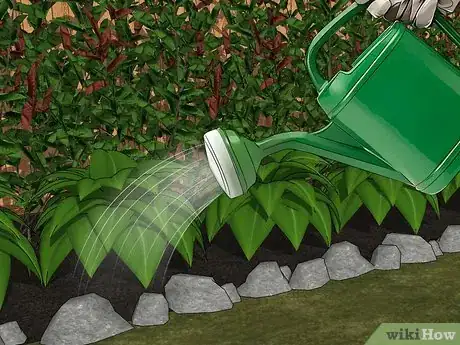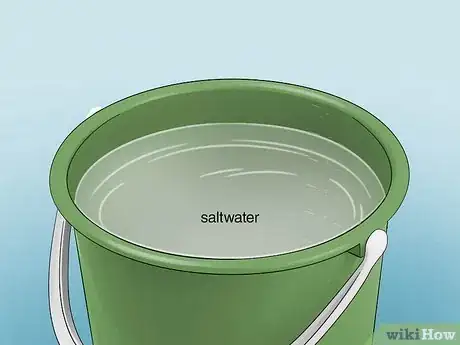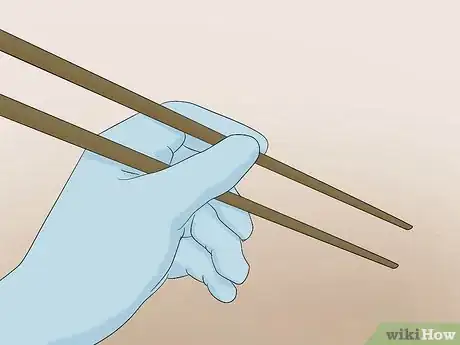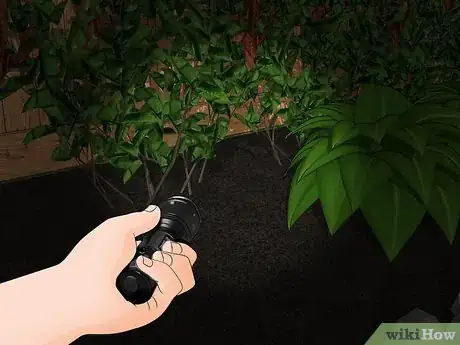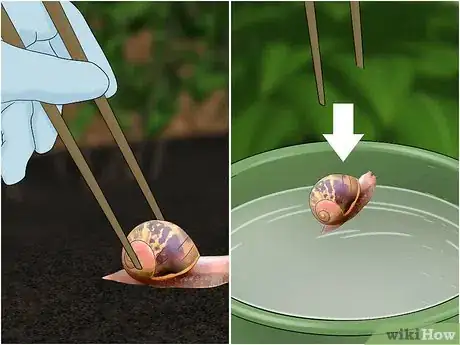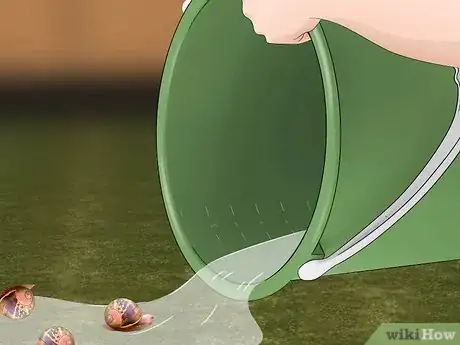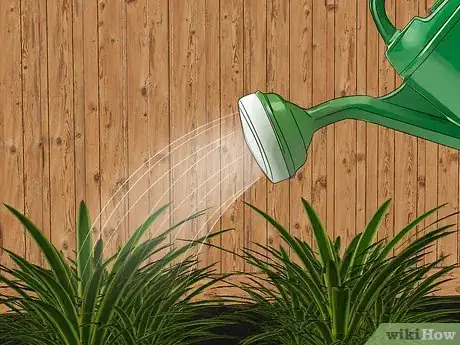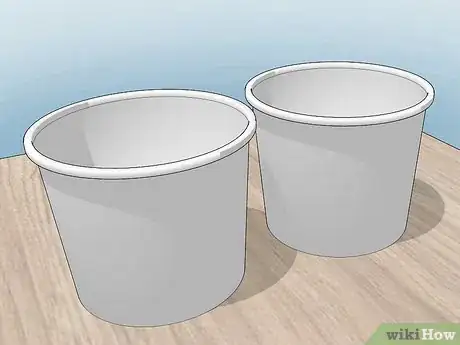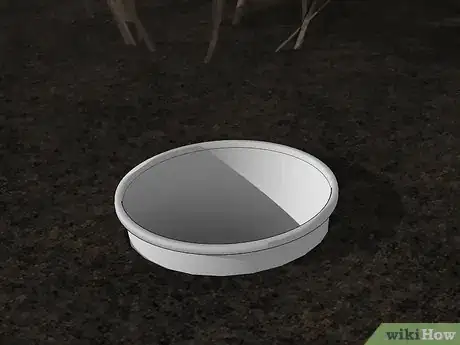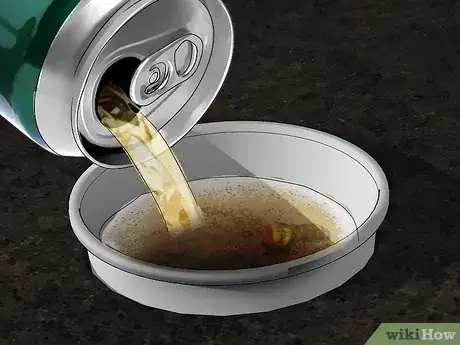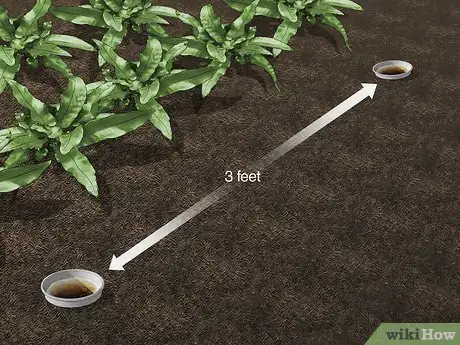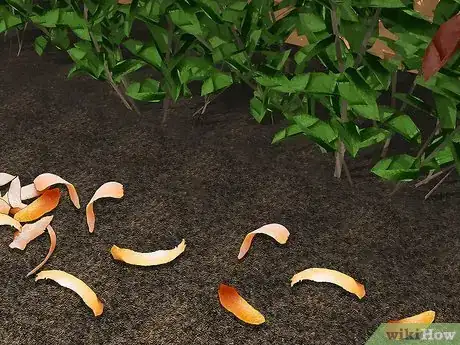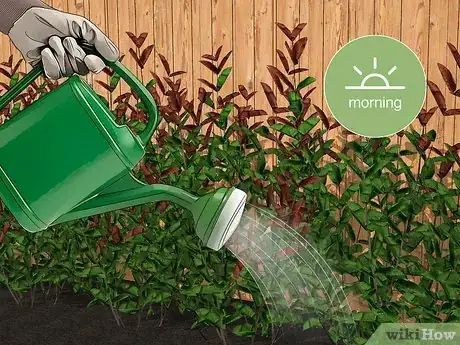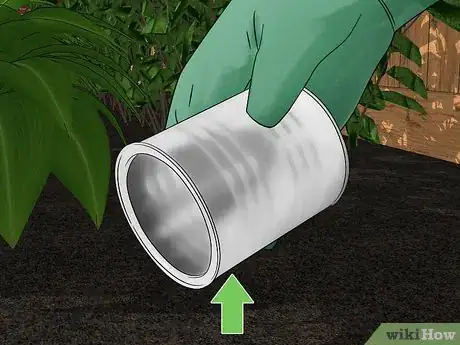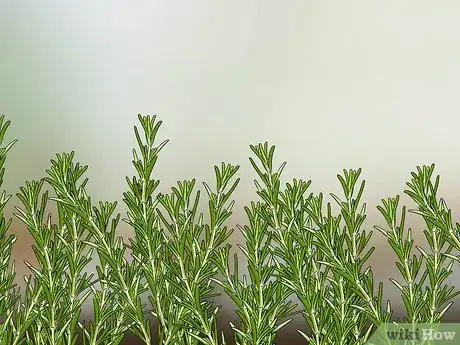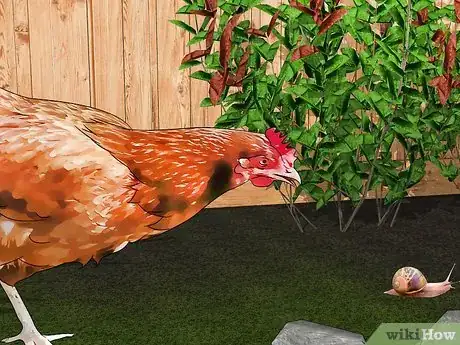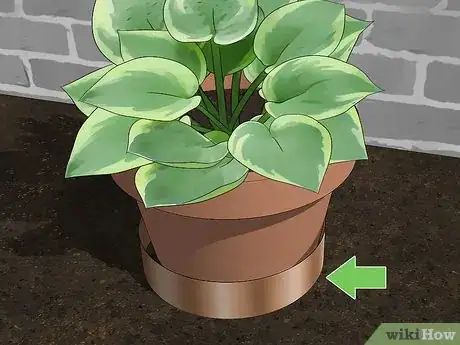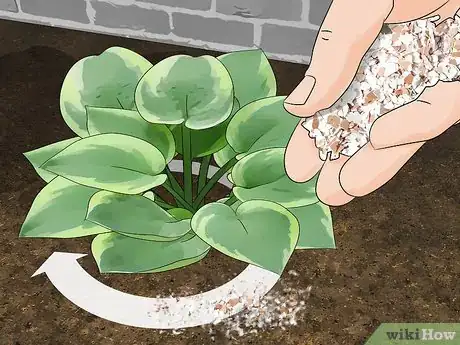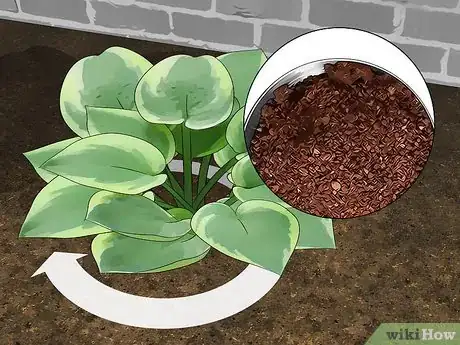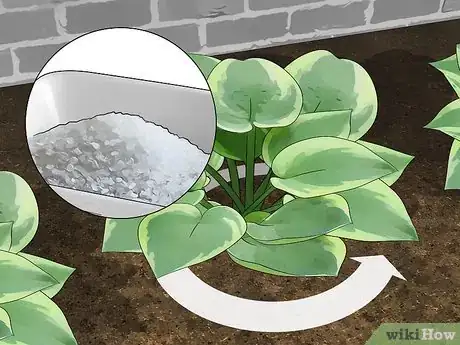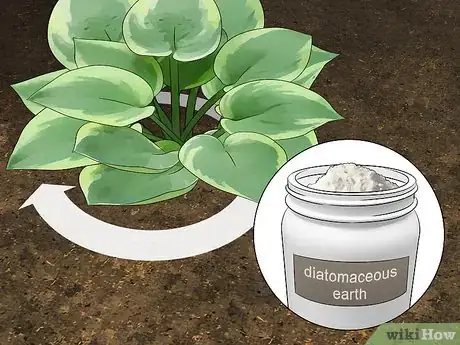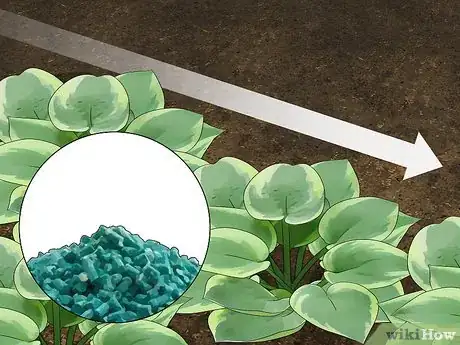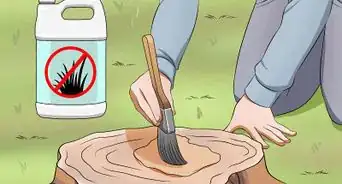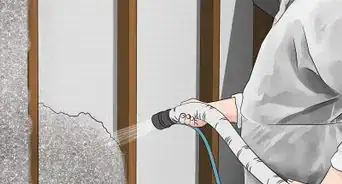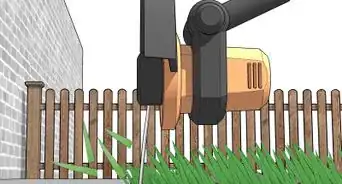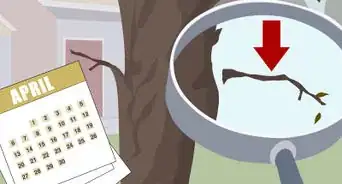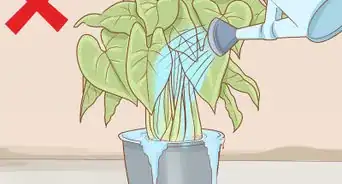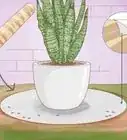This article was co-authored by Lauren Kurtz. Lauren Kurtz is a Naturalist and Horticultural Specialist. Lauren has worked for Aurora, Colorado managing the Water-Wise Garden at Aurora Municipal Center for the Water Conservation Department. She earned a BA in Environmental and Sustainability Studies from Western Michigan University in 2014.
There are 11 references cited in this article, which can be found at the bottom of the page.
This article has been viewed 20,601 times.
Snails are a common nuisance in flourishing, green gardens, but that doesn’t mean that you’re powerless in the face of the slow-moving havoc they can wreak. Try removing and relocating small groups of snails by hand. If that doesn’t work, you can lure them into traps during their prime feeding hours and safeguard your plants with materials like eggshells, coffee grounds, or diatomaceous earth to keep them from coming back.
Steps
Removing Snails By Hand
-
1Wet the soil in your garden in the late afternoon or evening. In order for your manual removal efforts to be effective, you’ll want to draw out as many snails as you can. Spray your garden down thoroughly with a hose, focusing on open, outlying areas. The soil should still be damp by the time the sun goes down.
- Do this early on in the growing season before the snails have had time to lay eggs. Otherwise, your plan may backfire and make the environment a little too hospitable.
-
2Fill a large container with saltwater. Keep the container nearby while you’re on the prowl. This is where you’ll drop the snails you collect, unless you’d prefer to relocate them.[1]
- Choose a bucket or another container with a handle that will be easy to carry around while you’re combing your garden for intruders.
- Be careful not to let the salty water spill into your garden, or it could weaken your plants.
Advertisement -
3Equip yourself with a pair of tweezers or chopsticks. It may be easier to pluck the snails off delicate plants with one of these tools than with a thick pair of gloves. They’ll also keep a little distance between you and your targets if you’re squeamish about handling them.
-
4Use a flashlight to help you search for encroaching snails. Check on and under leaves, around the base of plants, and along fences and other garden structures. Look carefully and be patient. Snails are slow-moving creatures, so you may not notice them if you’re scanning too quickly.
- Placing a couple large wooden boards near the center of your garden may help simplify your search by giving the snails a place to gather and hide.
-
5Snatch up the snails and place them in the container of saltwater. Pluck any snails you happen to come across from the soil one by one using your chopsticks, or simply pick them up by hand. Once they’re submerged in the saltwater, their bodies will gradually dissolve.
- If you don’t feel comfortable sending scores of snails to their deaths, you can also deposit them in a bucket lined with sand or sawdust and release them somewhere else later on.
- Hunting for snails can be time-consuming task. It’s not unusual for gardeners to collect as many as 200 a night!
-
6Discard or release the snails far away from your garden. Pour out the salt remains where they won’t do any damage to your plants. If you’d rather take the humane approach and let your captives go, be sure to carry them at least 65 feet (20 m) away from your property to keep them from finding their way back.[2]
- Some gardeners even go so far as to dissolve the snails they catch in a bucket of plain hot water and pour the soupy solution over their plants to serve as a warning for other snails in the area.[3]
- Get in the habit of repeating this chore nightly, or perform inspections periodically as needed.
Trapping Snails
-
1Hose down your garden in the afternoon or evening. Direct most of the water to open areas rather than those containing plants you’re worried about protecting. The smell of moist soil will help attract snails to your garden, where you’ll have traps waiting for them.
-
2Select a shallow container to serve as a trap. You want your trap to be deep enough to make it tough for snails to escape once they’re inside, but not so large they’re difficult to put in place. Bowls and saucers with steep sides make good bases, as do the kinds of plastic containers that products like yogurt and ice cream are sold in.[4]
- For example, you could use a tuna or catfood can, both of which are great options for traps.
- If you’re interested in a heavier-duty solution, you can buy lidded snail traps from most gardening centers for as little as $10.
-
3Bury the container so that the lip sits just about soil level. Use a hand trowel to make a depression in the soil deep enough to anchor your makeshift trap. That way, when a snail comes along, it will tumble right into the container rather than being forced to climb the side.
- Shallow containers will obviously be easier to bury, and won’t be as disturbing to the soil in your garden.
- Avoid sinking the edging of the container flush with the soil. This can cause other beneficial insects like beetles and lacewings to fall in by accident.
-
4Fill the container with beer. Pour the beer to just below the top of the trap. Then, leave the trap to sit in one of the central areas of your garden overnight. Snails that come close to get a taste will find themselves swimming in the liquid with no way out.[5]
- Any type of beer will do the trick, but cheaper varieties will probably be best, since you’ll just be throwing it away when you’re done.
- You can also use a mixture of yeast and honey if you don’t happen to have any beer on hand. It’s actually the yeast that snails find so alluring, rather than anything in the beer itself.
-
5Place several individual traps throughout your garden to trap them. Each trap will only be effective for luring snails from a distance of about 3 feet (0.91 m). It may therefore be necessary to use more than one if you’re combating an extensive infestation, or your garden is spread out and covers a lot of ground.[6]
- Be sure to empty and refill your trap every day or every few days until you’ve got the problem under control.[7]
-
6Deposit grapefruit rinds throughout your garden. After polishing off a grapefruit with your breakfast, leave half of the hollowed-out fruit in an open area near your prized plants. Snails love citrus, and will clamor inside to get a taste. Once enough snails have collected inside the rinds, you can then simply remove them from you garden and dispose of them.
- This easy trapping method will also work with other types of citrus, but grapefruits tend to work best because of their large size.
Reducing Snail Activity
-
1Water your plants in the morning. Snails are most active at night, when the soil is wet and inviting. By allowing your beds to dry out slightly, you can make your garden less attractive to them.[8]
- The only exception to this measure will be when you have thirsty plants like roses or impatiens that need to be watered several times per day.
- Only give your plants as much water as they need. Soggy soil is particularly inviting to snails, slugs, and other moisture-loving pests.
-
2Keep your garden free of litter. Do a walk-through once a day and pick up any rubbish or refuse you happen to find. Snails often seek shelter underneath metal cans, wooden boards, and similar items. Once they find their way inside, they’ll lay eggs and their number will multiply.[9]
- Likewise, it may be a good idea to get rid of oddly-shaped statues, ornaments, and other garden fixtures where snails might be hiding if you’ve dealing with a serious infestation.
- Snail are hermaphrodites, which means even a single critter has the potential to lay dozens of eggs and make your snail problem worse.[10]
-
3Plant species that are naturally resistant to garden snails. Some plants are better adapted to surviving snail attacks than others. Examples of resilient species include geraniums, hydrangea, impatiens, rosemary, lavender, begonias, and most ornamental grasses.[11]
- By contrast, plants like hosta, dahlias, beans, cabbage, and strawberries are among the most common targets of hungry snails.[12]
-
4Let farm birds to graze on stray snails. If you keep chickens or ducks, allow them to roam freely in areas most affected by snail activity. These birds will hunt and eat snails and other small creatures that commonly go unseen in your garden. As an added bonus, they'll even convert them into a free fertilizer for you.[13]
- Consider inviting other wildlife into your garden, if you’re not worried about their numbers becoming an issue. Many types of birds, toads, and snakes have been known to make a meal of garden snails.[14]
Protecting Your Plants
-
1Fashion copper collars for potted plants and tree trunks. Purchase strips of copper flashing and foil and wrap them around the lower portions of exposed plants. You can even enclose plants growing directly in the soil with a solid piece of copper. Snails have difficulty climbing up the slick metallic surface, which is believed to give them a light electrical shock.[15]
- When using copper collars to protect in-ground plants, be sure to sink them deep enough to prevent crafty snails from burrowing underneath.
- Many gardening centers sell bands of copper that are 6–8 inches (15–20 cm) wide for precisely this purpose.
- Be careful not to disturb or damage the roots while you're placing the copper band around the plant.
-
2Sprinkle eggshells around the base of vulnerable plants. Invading snails will have difficulty sliding over the rough, shifting edges of the shells. Apply the eggshells heaviest around plants that snails like to munch on, like herbs, leafy fruits and vegetables, and newly-opened flowers.[16]
- Snails also have difficulty traveling across other loose materials like sand and sawdust, and tend not to try unless they’re desperate for food.
- Garden snails are particularly fond of beans, cabbage, basil, delphinium, hostas, dahlias, lettuce, strawberries and marigolds.
-
3Scatter coffee grounds over the surrounding soil. The acid present in used coffee grounds will quickly dry out the soil. Since snails don’t like to travel on dry ground, they’ll think twice about coming any closer. Coffee is also a natural repellent to pests like snails due to its pungent odor and high acidity.[17]
- It’s important to use grounds that have already been used to brew coffee. Freshly-ground beans won’t provide the same effect.
-
4Cover the soil with a light coating of salt. Shake out the salt in a loose ring around at-risk specimens, being careful not to get any on the plants themselves. It’s common knowledge that salt is deadly to snails and slugs. When they crawl over it, it will cling to their sticky bodies, dehydrating them rapidly and eventually causing them to dissolve.[18]
- Grab a coarse-ground variety of salt like kosher or sea salt rather than ordinary table salt. The larger pieces won’t break down as quickly in damp soil.
- Salt can be harmful to vegetation as well, so it isn't a good idea to sprinkle it directly onto your plants or any areas where you intend to do any growing in the future.[19]
-
5Use diatomaceous earth in problem areas throughout your garden. The fine white powder works by leaving tiny cuts on the bellies of any slugs that come into contact with it, eventually leading to dehydration. Because its action is physical rather than chemical, diatomaceous earth makes an excellent deterrent not just for snails, but for a host of other soft-bodied pests.
- You can find diatomaceous earth at most major garden centers and greenhouses, and even some hardware stores. Look for untreated products designed specifically for garden use.
- Always wear a breathing mask anytime you’re working with diatomaceous earth. It can be a serious irritant if inhaled.[20]
-
6Apply snail pellets around your plants as a last resort. Snails pellets come in small, chewable pieces that are flavored with extracts from some of the critters’ favorite foods to be extra enticing. Their active ingredient, however, is a chemical known as metaldehyde. Any snails who consume the pellets will die of poisoning shortly afterward.[21]
- Be aware that snail pellets can also be extremely toxic to other animals and even people. For this reason, they’re not a wise solution for those with small children or pets at home.[22]
Warnings
- Keep in mind that the snails you successfully trap may only be a small part of a much larger invisible population. Just because your garden appears to be snail-free after a night or two of trapping doesn’t mean there’s not more lurking nearby.⧼thumbs_response⧽
Things You'll Need
- Snail-resistant plant species
- Chickens, ducks, or other farm birds
- Copper plant collars
- Eggs shells
- Used coffee grounds
- Salt
- Diatomaceous earth
- Snail pellets
- Large container
- Salt water
- Sand or sawdust (for nonlethal removal)
- Tweezers or chopsticks (optional)
- Flashlight
- Shallow container
- Beer
References
- ↑ http://www.weekendgardener.net/how-to/snails-slugs.htm
- ↑ http://www.weekendgardener.net/how-to/snails-slugs.htm
- ↑ https://www.express.co.uk/life-style/garden/479763/Stop-slugs-and-snails-eating-plants
- ↑ http://www.weekendgardener.net/how-to/snails-slugs.htm
- ↑ http://practicalpermaculture.com/2011/07/eleven-ways-to-get-rid-of-slugs-and-snails/
- ↑ https://www.todayshomeowner.com/how-to-control-slugs-and-snails-in-your-garden/
- ↑ http://www.youtube.com/watch?v=j4CsSx3E4fs
- ↑ http://practicalpermaculture.com/2011/07/eleven-ways-to-get-rid-of-slugs-and-snails/
- ↑ https://www.todayshomeowner.com/how-to-control-slugs-and-snails-in-your-garden/
- ↑ http://oregonstate.edu/dept/nurspest/slugs.htm
- ↑ http://www.allaboutslugs.com/slug-and-snail-resistant-plants/
- ↑ https://www.todayshomeowner.com/how-to-control-slugs-and-snails-in-your-garden/
- ↑ http://practicalpermaculture.com/2011/07/eleven-ways-to-get-rid-of-slugs-and-snails/
- ↑ http://practicalpermaculture.com/2011/07/eleven-ways-to-get-rid-of-slugs-and-snails/
- ↑ https://www.todayshomeowner.com/how-to-control-slugs-and-snails-in-your-garden/
- ↑ http://practicalpermaculture.com/2011/07/eleven-ways-to-get-rid-of-slugs-and-snails/
- ↑ https://www.express.co.uk/life-style/garden/479763/Stop-slugs-and-snails-eating-plants
- ↑ https://www.express.co.uk/life-style/garden/479763/Stop-slugs-and-snails-eating-plants
- ↑ https://www.extension.purdue.edu/extmedia/id/id-412-w.pdf
- ↑ http://npic.orst.edu/factsheets/degen.html
- ↑ https://www.youtube.com/watch?v=s01xS3w6kt4&feature=youtu.be&t=16
- ↑ http://www.pethealthnetwork.com/dog-health/dog-toxins-poisons/metaldehyde-poisoning-dangers-snail-and-slug-bait
